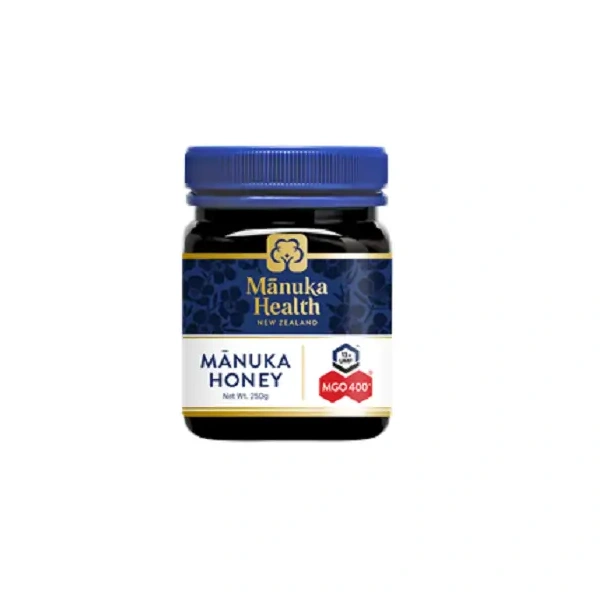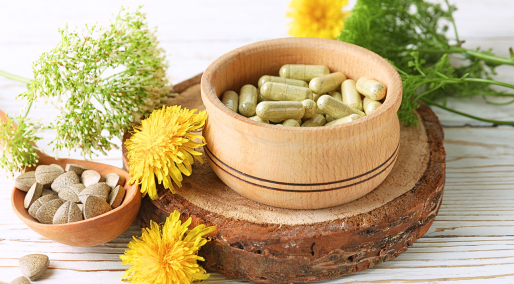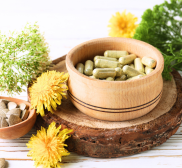Currency
- For the home
Health
- Bones and Joints
- Digestion and Healthy GI
- Essential Oils
- Fish Oil / Omega-3
- Healthy Sleep
- Heart and Cardiovascular System
- Immunity
- Liver
- MCT Oil
- Men
- Mind and Focus
- Minerals
- Pet Supplements
- Pro-Health Supplements
- Probiotics
- Senior
- Superfoods
- Urinary Tract
- Vitamins
- Vitamins for hair
- Vitamins for nails
- Vitamins for the skin
- Weight Management
- Woman
Healthy Diet
Herbs
Mother and Baby
Sport
Your Goal
Pet Supplements
Cosmetics
- Cosmetics for children
- Men's Cosmetics
- Unisex Cosmetics
- Women's Cosmetics
- Dezodoranty i perfumy
- Higiena jamy ustnej
- Kosmetyki akcesoria
- Kosmetyki dla dzieci2
- Kosmetyki do ciała
- Kosmetyki do higieny intymnej
- Kosmetyki do opalania
- Kosmetyki do pielęgnacji ust
- Kosmetyki do twarzy
- Kosmetyki do włosów
- Papier toaletowy / chusteczki
MANUKA HEALTH Manuka Honey MGO 400+ (Manuka honey) 250g
Available: 0 szt.
1,95 €
Price per portion: 0,14 €
Temporarily unavailable
Buy for 200 pts
After purchase you will receive 8 pts
You can exchange your accumulated loyalty points for this product. Log in to your account to check the number of available loyalty points.
After purchase you will receive 8 pts
After shipping your order, we will award you this amount of loyalty points. The loyalty program is available to customers who have an account in the store
Product Details
- Description
- Dosage
- Ingredients Table
- About the brand
- Nutritional information
- Reviews (0)
- Articles
Manuka honeys are homogeneous honeys that were produced only in New Zealand, during the period of flowering Manuka shrubs, which are mainly made of the nectar of Leptospermum scoparium species.
These honeys should additionally have the following features: appropriate conductivity range, exceptional taste defined as mineral, slightly bitter; strongly aromatic fragrance with noticeable notes of moist earth and heather; the presence of pollen characteristic of Manuka shrubs and active ingredients, including: methylglyoxal (MGO®) (Science and characteristing Manuka honey - Current and future science to support a definition. Ministry for Primary Industries, New Zealand Government. July 2014).
MGO® is an abbreviation of Methylglyoxal - a natural substance recognized by scientists as a characteristic ingredient of Manuka honeys, which, due to its high content, differ from other honeys available on the market. The research on the composition of Manuka honeys and methylglyoxal was conducted by prof. Thomas Henle from the Dresden University of Technology - one of the world's leading food researchers. Conclusions of prof. Henle was supported by New Zealand scientists, including: prof. Molan, an earlier precursor of Manuka honey research. This is how the method of measuring and determining the quality of Manuka honeys - MGO® was created, which is objective and repeatable.
Dosage
Recommended consumption: 1-2 teaspoons 3 times a day before a meal.
Ingredients
Container: 250gServing Size: 1-2 Teaspoons
Servings per Container: 14
Form: Powder
Ingredients
Content in a portion
in 100 g
% RDI
Other ingredients
100% New Zealand MGO 400+ Manuka HoneyNot suitable for infants under 12 months.
About the brand
Nutritional information
A dietary supplement / A nutrition supplement as a substitute for everyday diet, used for weight control.
Cannot be used as a substitute of a healthy and balanced diet.
Not to be used by pregnant or nursing women.
Do not exceed recommended dosage per day.
Keep out of reach of children.
Best before: date on the package
All descriptions are the property of the www.mass-zone.eu. Copying or distribution is strictly prohibited! As per the Copyright Act from February 4th, 1994.
Producent: Manuka Health New Zealand
Cannot be used as a substitute of a healthy and balanced diet.
Not to be used by pregnant or nursing women.
Do not exceed recommended dosage per day.
Keep out of reach of children.
Best before: date on the package
All descriptions are the property of the www.mass-zone.eu. Copying or distribution is strictly prohibited! As per the Copyright Act from February 4th, 1994.
Producent: Manuka Health New Zealand
Reviews
No one has written a review for this product yet. Be the first to write a review.
there is no articles
Customers also bought
No data to display
OTHER PRODUCTS FROM THIS CATEGORY
Red clover (Trifolium pratense) supports the maintenance of a proper hormonal balance…
6,84 €
Add to cart
ForMeds Bicaps MenoFEM (Menopause) 60 Capsules
BICAPS MenoFEM is a combination of 5 ingredients intended for women in the menopausal…
23,20 €
Add to cart
SWANSON Full Spectrum Tribulus Fruit (Libido Support) 90 Capsules
Swanson Tribulus Fruit is an effective supplement in enhancing the libido and promoting…
9,03 €
Add to cart
SWANSON FiberAid Larch Tree Arabinogalactan (AG) (Fiber, Digestion) 250g
FiberAid is a unique soluble fiber that offers superior benefits for gastrointestinal…
32,72 €
Add to cart
NOW FOODS Gluten Digest (Gastrointestinal Support) 60 Vegetarian Capsules
Gastrointestinal Support BioCore®DPP IV Helps Digest Gluten & Cereal Grains…
17,82 €
Add to cart
MARINEX LaSqualana Regenerative Oil with Squalane 50ml - Fragrance Version
A concentrated source of pro-youthful sea-building substance for the skin. Oil…
Add to cart
ForMeds Bicaps Biotin (Healthy skin and hair) 60 vegetable capsules
Dietary supplement BICAPS® BIOTIN contains 2,500 μg of biotin in the form of D-biotin.…
8,79 €
Add to cart
Kapsułki na menopauzę (klimaktil) bezglutenowe 60 szt. - pharmovit
"SKŁADNIKI Składniki w porcji dziennej: Ekstrakt z nadziemnej części koniczyny czerwonej…
13,19 €
Add to cart
Graviola ekstrakt (550 mg) 60 kapsułek - soul farm
"SKŁADNIKIgraviola ekstrakt 550 mg, kapsułka: pullulanOPISSuplement diety. Zawartość…
10,50 €
Add to cart
ForMeds BiCaps Libifem (Women's Sexual Health and Activity) 60 Capsules
BICAPS LibiFEM is a product designed specifically for women. It contains natural…
16,12 €
Add to cart
SWANSON Fenugreek Seed (Fenugreek) 90 Capsules
Popular herbal remedy for blood sugar and hormone support, digestive health…
5,86 €
Add to cart
YANGO Shatavari Extract 90 Vegetarian Capsules
Equilibrium in women's physiology Positive effect on the male reproductive system…
13,19 €
Add to cart
Himalaya AyurSlim (Digestion, Metabolism) 60 Capsules
Ayurvedic slimming formula. Exttract Garcinia cambogia helps in weight control,…
10,01 €
Add to cart
PiLeJe Feminabiane – Endo’Calm (endometriosis support, cycle regulation) 30 capsules + 60 tablets
Feminabiane Endo’Calm helps maintain the proper balance of the menstrual cycle,…
29,79 €
Add to cart
NOW FOODS Women's Probiotic 20 Billion 50 Vegetarian Capsules
Supports Vaginal Health Reduces Occasional Bloating NOW Women's Probiotic…
25,88 €
Add to cart
NOW FOODS Eve Superior Women's Multi 90 Tablets
HEALTH BENEFITS - NOW Foods Eve is one of the best products in the multivitamin…
25,88 €
Add to cart
ENZYMEDICA Lacto (Digestion of Milk) 30 Capsules
Many people have difficulty digesting meals containing dairy, resulting in discomforts…
21,98 €
Add to cart
SWANSON FemFlora (Female Bacterial Flora) 60 Capsules
Supports digestive, urinary and vaginal health. Supports overall women's health.…
12,21 €
Add to cart
NOW FOODS D-Mannose (D-Mannoza) 85g
Urinary tract health support - D mannose is a naturally occurring simple sugar that…
18,31 €
Add to cart
GARDEN OF LIFE Oceans Mom (EPA and DHA for pregnant and lactating women) 30 Softgels
Oceans MOM Prenatal DHA is made with an UltraPure molecularly distilled blend of…
18,07 €
Add to cart
Newsletter
© 2023 mass-zone.eu. All rights reserved
Follow us

























